
With a strong focus on performance, flexibility and ease of use, Huidu video processors meet the needs of modern LED display systems and provide a range of powerful features.
In today’s world of high-definition video and dynamic LED displays, the role of a reliable video processor cannot be overstated.
If the athlete’s movements on the LED screen suddenly freeze during a global live sports event, the audience will boo in dissatisfaction; or the advertising screen in a shopping mall has insufficient resolution, resulting in blurred product details and a greatly reduced brand image. The root cause of these problems often lies in an overlooked core device – the LED video processor.
1. Why Video Processors Matter for LED Displays
LED displays are everywhere today, from large advertising boards to sports stadiums and live event screens. But what makes these displays so vibrant and sharp? A lot of it comes down to the video processors behind them.
As the “brain” of the LED display, the video processor is responsible for converting the input signal into instructions that the screen can recognize. Its performance directly determines the smoothness of the picture, color accuracy, and multi-screen collaboration capabilities.
Without a reliable video processor, even the best LED display will fall short in delivering the intended visuals.
However, most processors on the market still face three major challenges:
Difficulty in high-resolution adaptation: Traditional equipment makes it difficult to support real-time processing of 8K/16K ultra-high-definition content;
Excessive delay: Especially in live broadcasts, e-sports, and other scenes, delays of >20ms will cause visible audio and video asynchrony;
Compatibility limitations: New signal interfaces (such as HDMI 2.1, 12G-SDI) are difficult to seamlessly connect with old systems.
This is the significance of the birth of Huidu Video Processor – it is not only a signal conversion tool but also redefines the standard of LED display control through hardware innovation and intelligent algorithms.
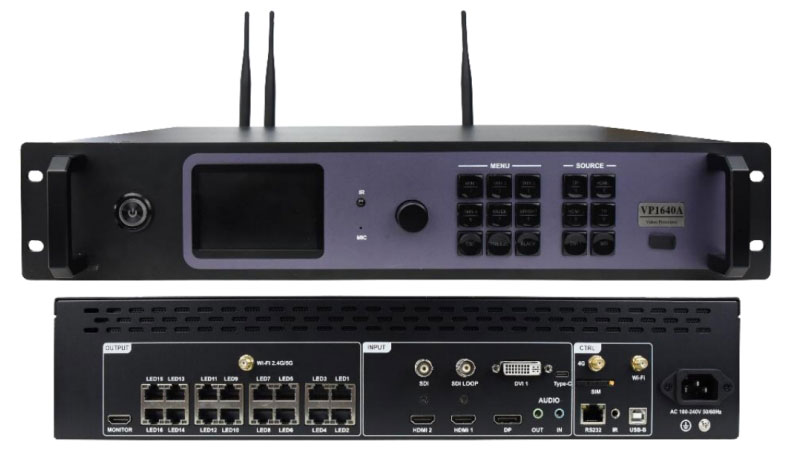
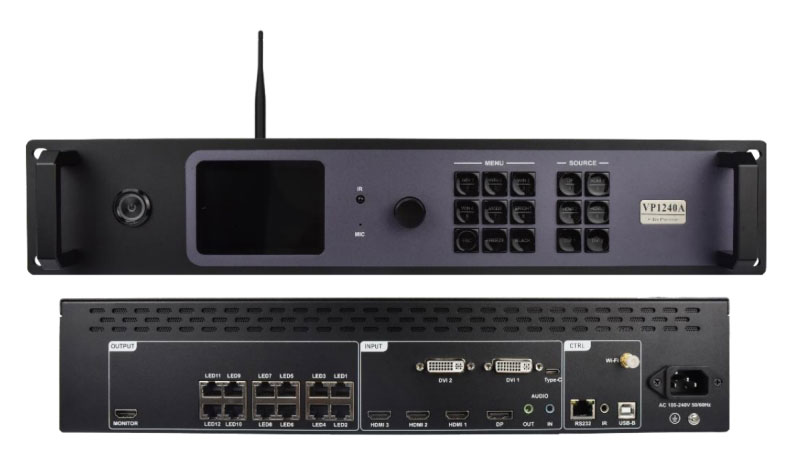
2. Huidu Video Processor Overview
Huidu Technology stands out for providing a wide array of video processors designed to meet various display needs. Their LED video processors are engineered to handle different signal types—HDMI, DVI, VGA, and CVBS—and can support high-resolution inputs, up to 4K.
2.1 Video Processor
2.1.1 Huidu HD-VP410H/210H
A three-in-one video processor integrating traditional video processing, synchronous sending card, and U-disk playback. It supports control ranges up to 2.6 million pixels, with the widest at 3840 and the highest at 1920. Input options include USB, HDMI, DVI, VGA, and CVBS, with RJ45 outputs.
2.1.2 Huidu HD-VP820/620
A 2-in-1 video processor that combines synchronous sending card and video processing functions. It supports 4K source video signal input and dual picture output, with multi-channel video source arbitrary switching. Audio input and output are also supported.
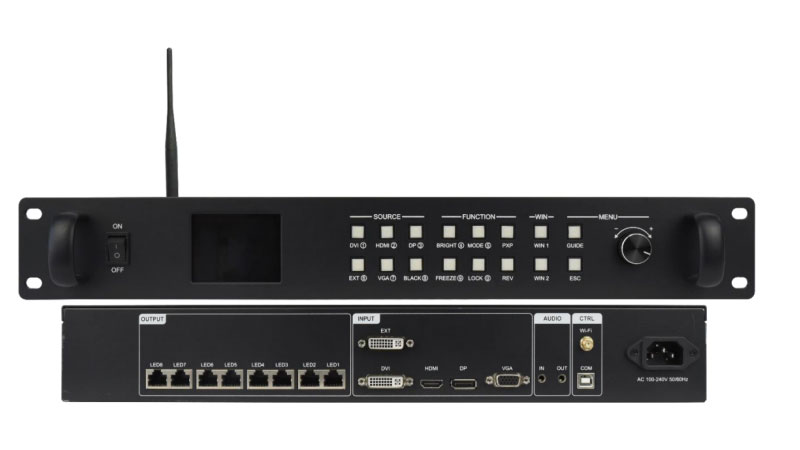
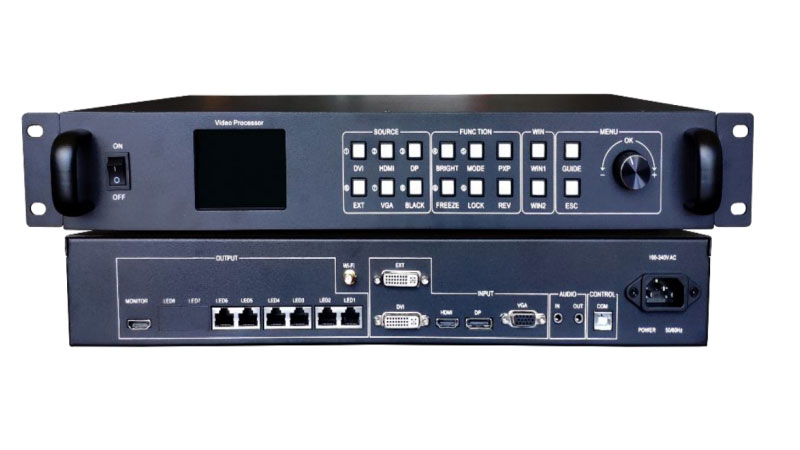
2.1.3 Huidu HD-VP2060
A 2-in-1 video processor integrating traditional video processing and 20-way Gigabit network port output. It supports six-channel signal interface input, suitable for environments like hotels, shopping malls, and conference rooms.
2.1.4 Huidu HD-1620C/1220C
Support for up to 16 Gigabit Ethernet ports and a pixel capacity of 10.4 million pixels. It supports dual 4K inputs with 1:1 pixel mapping, ensuring high-definition image quality across multiple screens. With rich interface options (DP 1.2, HDMI 2.0) and versatile control methods, including wireless debugging, central control, and mobile control, it provides flexible and precise management for complex display setups.
2.2 Splicing Video Processor
Huidu HD-VP8000M
The HD-VP8000M is a powerful hybrid plug-in intelligent image splicing processor designed to manage multi-window splicing across multiple screens. Ideal for complex setups such as security monitoring, traffic management, video conferences, and large-scale commercial spaces, this processor enables dynamic image displays and seamless integration of various signal sources.
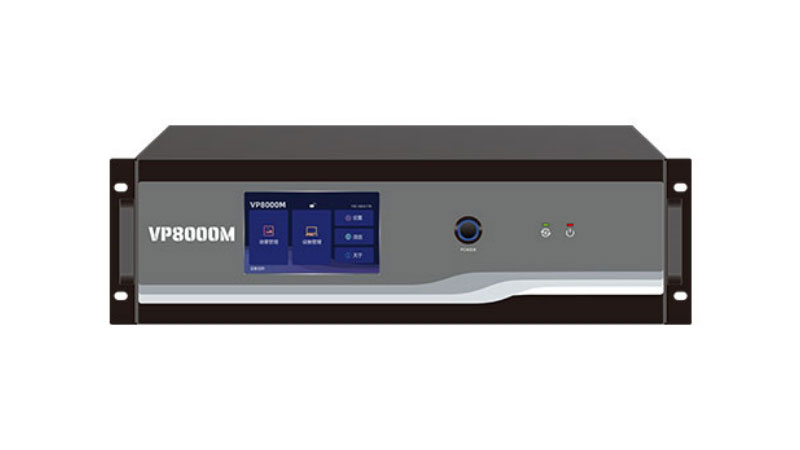
3. Technical Advantages
Since its establishment in 2009, Huidu Technology has focused on delivering high-performance video processing technology. With over 1,200 large-scale display projects completed worldwide, including landmark installations like the main screen at Expo 2020 Dubai and the NBA team’s circular display, Huidu has firmly established itself as a leader in the industry. The brand holds 12 international patents and has earned ISO 9001 quality management and RoHS environmental certifications. There four core functional advantages:
3.1 Ultra-High Definition, Lossless Processing
Huidu exclusively integrates HDR10+ dynamic mapping technology, enabling even 4K input signals to be intelligently upscaled to 8K or 16K outputs using AI algorithms, significantly reducing pixel grain. The system supports a maximum resolution of 7680×4320@60Hz, making it suitable for massive displays exceeding 1,000 square meters.
3.2 Industry-Leading Low Latency
With a latency of under 5ms, Huidu’s video processor uses a Fiber Direct Link architecture to bypass traditional compression steps, achieving lightning-fast signal-to-screen response times. In comparison to other leading brands, Huidu’s processing speed is 63% faster.
3.3 Full-Format Compatibility and Intelligent Signal Switching
Supporting up to 8 types of signal inputs, including HDMI 2.1, DisplayPort 1.4, and 12G-SDI, the device automatically recognizes and optimizes signal sources. Huidu’s unique Hybrid Sync technology ensures seamless handling of different input formats (e.g., PC video and live camera streams) without blackouts or screen flickering.
3.4 Color Consistency Management
Huidu’s built-in 3D LUT color calibration system guarantees color uniformity across screens, achieving a color difference of less than 0.5ΔE, which is undetectable by the human eye. The environmental light adaptive mode adjusts the gamma curve automatically based on ambient light intensity, so that outdoor screens remain clear and vivid even in bright sunlight.
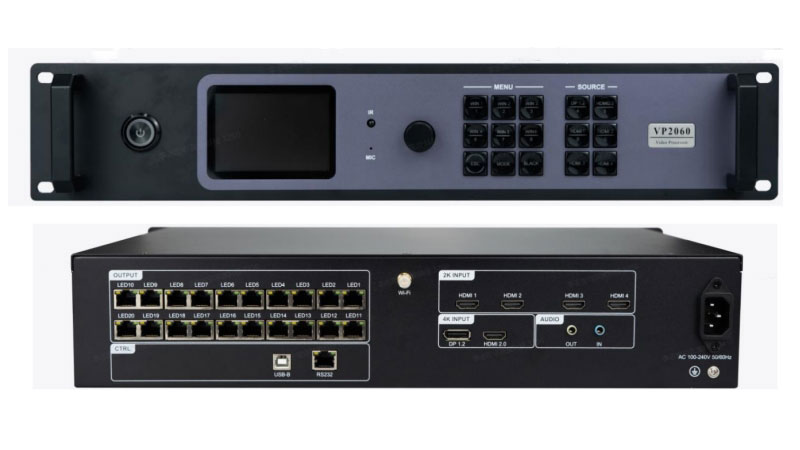
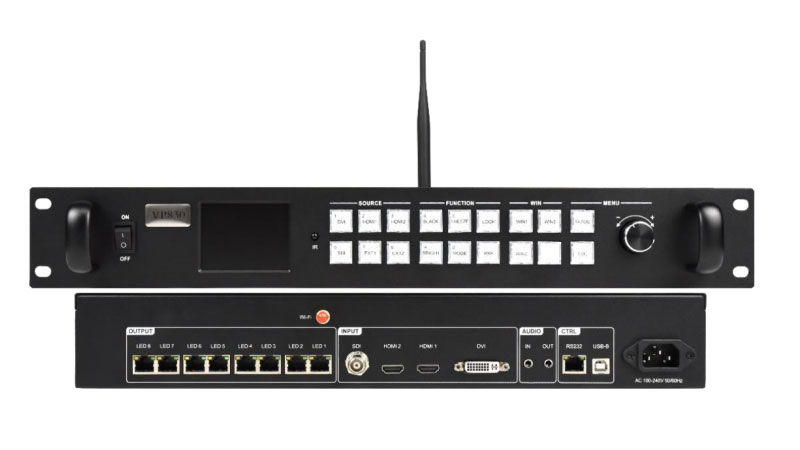
4. Pricing and Purchasing Guide
When it comes to pricing, Huidu offers a range of video processors to fit different budgets and project requirements. For instance, the HD-VP410 is around $153, while more advanced models like the HD-VP8000M can cost significantly more, depending on their features.
You can register LedInCloud to self-check prices for Huidu products, or contact LedInCloud for the latest offers.
5. Huidu Video Processor Resource Hub
LedInCloud- LED Screen Cloud Platform commitment to customer support is evident in the comprehensive resources they provide:
- Software Downloads: Regular updates to keep the processors running smoothly.
- Documentation: Detailed user manuals and setup guides are available for easy reference.
- Online Support: Access to a responsive support team for troubleshooting and inquiries.
6. FAQs
What types of signals can Huidu video processors handle?
They support a wide range of signals, including HDMI, DVI, VGA, and CVBS.
How do I choose the right LED video processor for my display?
Consider the LED display’s resolution, size, and the features you need, such as multi-channel switching or 4K support. Feel free to contact us to get the best fit for you.
Is the Huidu video processor compatible with all types of LED screens?
Huidu video processors are designed to be highly versatile and compatible with a wide range of LED screens. They support various input formats, including HDMI, DVI, and DisplayPort, and are designed to work with both small and large-scale LED setups, offering flexibility for various applications.
How do I connect a video processor to an LED display?
To connect a video processor to an LED display, simply connect the appropriate cables (HDMI, DVI, etc.) from the video processor’s output to the display’s input.
7. Conclusion
Huidu video processors offer versatility, high performance, and ease of use, making them a solid choice for a variety of applications. By understanding the options available and the specific needs of your LED project, you can select the best Huidu LED video processor that enhances both the functionality and visual quality of your LED display.
